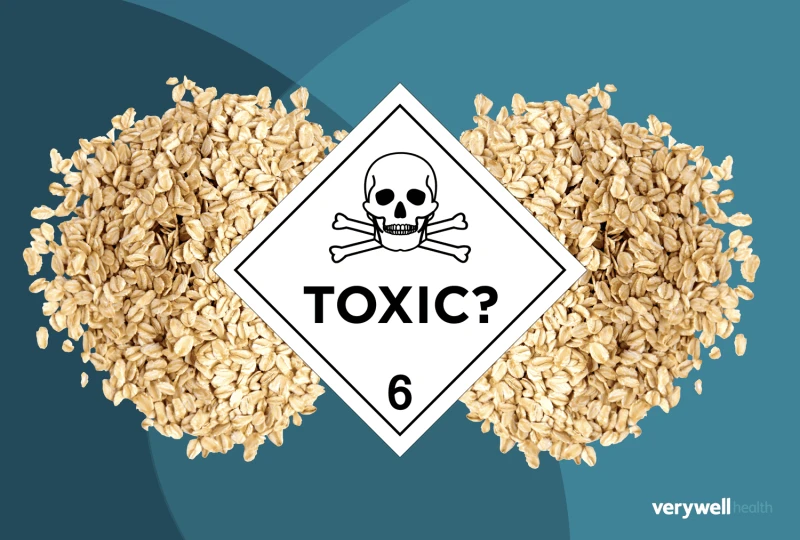Viewpoint: Environmental Working Group up to its old trick of misrepresenting science to scare us about chemical traces in its attack on oat products containing micro-levels of chlormequat
Viewpoint: Environmental Working Group up to its old trick of misrepresenting science to scare us about chemical traces in its attack on oat products containing micro-levels of chlormequat


So, here we go. Something else to worry about. At least according to the Environmental Working Group (EWG), a non-profit organization that states as its goal the “providing of easy access to information you need to make smart, healthy choices.” Those choices usually favour “organic” products which isn’t surprising since the organization receives significant funding from the organic industry. EWG is generally critical of the pesticides used in conventional agriculture and of many of the additives used by the food industry and often drifts from informing into alarming consumers. This time EWG has set its sights on chlormequat, a plant growth regulator that is sometimes used on oats, barley and wheat to strengthen the stalk, keeping it from bending over. This reduces crop loss when it comes to harvesting, which of course is profitable for the farmer, and hopefully reduces the price for the consumer.
First, based on only 96 urine samples from unidentified donors, it is not valid to conclude that 80 percent of consumers, in general, have chlormequat in their urine. The samples were collected in three distinct locations in Florida, South Carolina and Missouri and we have no idea if the samples came from urban or agricultural communities. Also, finding chlormequat in the urine means that it passes out of the body, which it is known to do quickly, having a half-life of a few hours.
Second, the amount detected in the urine was of the order of 50 nanograms, which is way below the acceptable daily intake. A study in Sweden that collected urine from 100 random individuals in the general population found similar results. The amounts detected were way below the acceptable daily intake (ADI).
…
As far as the oats go, the highest amount detected was 0.3 parts per million, which is way below 40 ppm, the amount of residue allowed. An individual would have to eat roughly 3 kg of oat cereal a day to reach a level where there may be some risk, were that amount eaten every day.
Third, the fertility problems were seen in animals fed higher doses than what humans could possibly consume and were seen in some studies but not others.
It is easy to scare people about chemicals if proper context is not provided.
This is an excerpt. Read the original post here
The GLP featured this article to reflect the diversity of news, opinion and analysis. The viewpoint is the author’s own. The GLP’s goal is to stimulate constructive discourse on challenging science issues.

 | Videos | More... |

Video: Nuclear energy will destroy us? Global warming is an existential threat? Chemicals are massacring bees? Donate to the Green Industrial Complex!
 | Bees & Pollinators | More... |

GLP podcast: Science journalism is a mess. Here’s how to fix it

Mosquito massacre: Can we safely tackle malaria with a CRISPR gene drive?

Are we facing an ‘Insect Apocalypse’ caused by ‘intensive, industrial’ farming and agricultural chemicals? The media say yes; Science says ‘no’
 | Infographics | More... |

Infographic: Global regulatory and health research agencies on whether glyphosate causes cancer
 | GMO FAQs | More... |

Why is there controversy over GMO foods but not GMO drugs?

How are GMOs labeled around the world?

How does genetic engineering differ from conventional breeding?
 | GLP Profiles | More... |

Alex Jones: Right-wing conspiracy theorist stokes fear of GMOs, pesticides to sell ‘health supplements’


 Viewpoint — Fact checking MAHA mythmakers: How wellness influencers and RFK, Jr. undermine American science and health
Viewpoint — Fact checking MAHA mythmakers: How wellness influencers and RFK, Jr. undermine American science and health Viewpoint: Video — Big Solar is gobbling up productive agricultural land and hurting farmers yet providing little energy or sustainabilty gains
Viewpoint: Video — Big Solar is gobbling up productive agricultural land and hurting farmers yet providing little energy or sustainabilty gains Fighting deforestation with CO2: Biotechnology breakthrough creates sustainable palm oil alternative for cosmetics
Fighting deforestation with CO2: Biotechnology breakthrough creates sustainable palm oil alternative for cosmetics Trust issues: What happens when therapists use ChatGPT?
Trust issues: What happens when therapists use ChatGPT? Confronting the elephant in the human biodiversity room — the explosive issue of IQ
Confronting the elephant in the human biodiversity room — the explosive issue of IQ 30-year-old tomato line shows genetic resistance to devastating virus
30-year-old tomato line shows genetic resistance to devastating virus Four ways to strip carbon out of agriculture and limit farming’s climate impacts
Four ways to strip carbon out of agriculture and limit farming’s climate impacts California, Washington, Oregon forge immunization alliance to safeguard vaccine access against federal undermining
California, Washington, Oregon forge immunization alliance to safeguard vaccine access against federal undermining The free-range chicken dilemma: Better for birds, but with substantial costs
The free-range chicken dilemma: Better for birds, but with substantial costs ‘You have to treat the brain first’: Rethinking chronic pain with Sanjay Gupta
‘You have to treat the brain first’: Rethinking chronic pain with Sanjay Gupta
